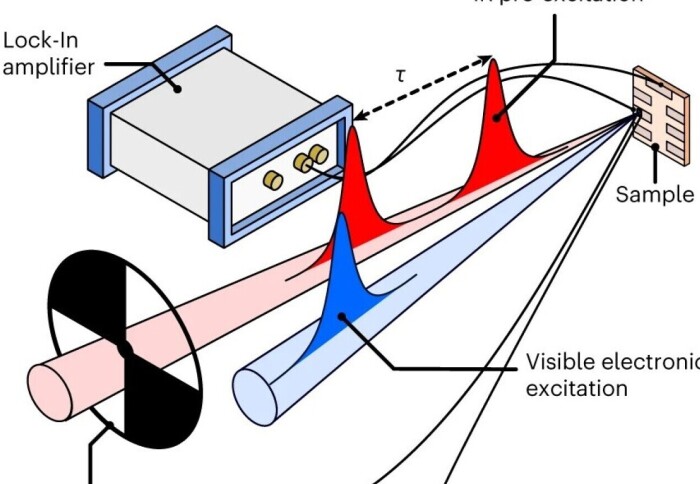Mapping solar cell movements
by Lisa Bushby

Credit: Dr Artem Bakulin
Small cations made of organic molecules surrounded by an inorganic cage can vibrate and change the electronic and organic properties of the material.
Hybrid perovskites are materials that show great promise for devices like photovoltaics, or solar panels, due to their high sunlight-converting performance.
However, there are still unknowns about hybrid perovskites that could reveal new ways to improve performance. The material consists of small, positively charged cations made of organic (carbon-containing) molecules surrounded by ‘cages’ of inorganic molecules. The molecules are not tightly held however, and their movements contribute to the electronic and organic properties of the perovskites.
It was thought that the vibrations of the inorganic molecules primarily controlled these properties, but some researchers suspected the rotations of the organic molecules also played a role. This has been difficult to determine, as the processes are extremely fast, occurring on the order of picoseconds (trillionths of a second).
Now, an international team led by Imperial researchers in the Department of Chemistry have devised a technique that can measure these ultrafast movements in working perovskite solar cell devices, which they call ‘Photocurrent Detected Vibrationally Promoted Electronic Resonance’ (PC-VIPER).
With this, they showed that interactions between the organic and inorganic molecules are important for the optical properties of the material and functioning of the devices. Having established this, the team now want to understand the interaction more, such that new designs can take advantage of the process to improve efficiency of functional devices.
Read the full paper in Nature Materials.
Article text (excluding photos or graphics) © Imperial College London.
Photos and graphics subject to third party copyright used with permission or © Imperial College London.
Reporter
Lisa Bushby
Department of Physics